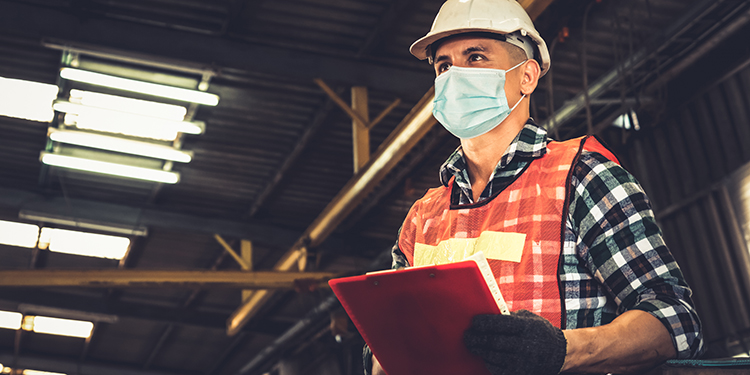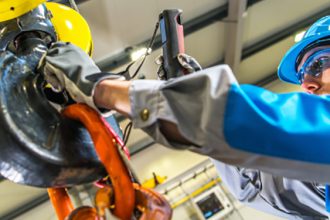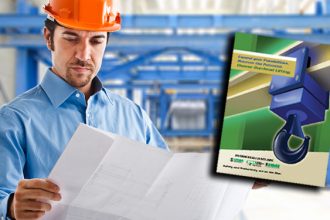Members of MHI’s Overhead Alliance Address Challenges of Pandemic with Flexible, Nimble Responses

This article appeared in the May 2020 issue of Lift & Hoist International.
The impact of the COVID-19 global pandemic to our modern world has been unprecedented — and remains unpredictable. While much is still unknown about this virus, the member companies of MHI’s Overhead Alliance remain steadfastly determined to support our customers, employees and communities in every way we can.
Going forward, whether our efforts will be deemed best practices or simply the best we could do at the time given the information at hand remains to be seen. However, the following compilation details the myriad ways in which our individual members have responded to this crisis. It is our hope that our overhead handling colleagues worldwide will find these measures helpful — and continue to share their own efforts — as we all anxiously await the conclusion of difficult period.
Support for Customers Serving the Front Lines
Communication to customers has been increased across the board, specifically via emails from key leadership, as well as account and project managers, to assure them that operations are continuing, and projects are moving forward.
Members have answered the call to design and produce custom overhead handling equipment for use in the production of life-saving medical equipment. Among them, one supplier produced a freestanding crane in just seven days — a project that typically takes 12 to 14 weeks — by working around the clock to design, fabricate and install the new unit at an existing customer’s facility. Immediately, the new crane was put into service for the production of ventilators for hospitals.
Further, another supplier delivered emergency maintenance parts for a crane used in an operation manufacturing Tyvek material to ensure continuous uptime. Although the crane was not experiencing an issue, the facility had increased its production and management wanted to stock additional spare parts on-site. Because the finished material is used to manufacture critical personal protective equipment (specifically suits for front line medical workers), the operation has ramped up its production schedule, increasing crane runtimes.
A similar concern in the paper industry — including manufacturers of toilet paper, which has been in short supply across the U.S. for the past few weeks — has led some member companies to embed dedicated, onsite technicians in certain customer operations. Likewise, remote service teams have been working overtime to make emergency repairs for customers whose operations also supply other essential industries. In addition to repairs, these teams are performing additional equipment inspections to ensure smooth, consistent operation and prevent breakdowns and downtime.
Human Resources – Supporting Your Workforce
All of our member companies and their employees have adapted to the crisis by embracing a mentality of agility. Some have established new online portals that permit employees to report illness, symptoms and childcare issues they are experiencing — either personally or within their immediate families. Many organizations have expanded their employees’ insurance coverage and benefits, with the companies committing to cover the cost of any medical bills resulting from COVID-19 treatment.
To reinforce strong company cultures and acknowledge the additional efforts and sacrifices employees make daily to keep operations running, top leaders have significantly increased their internal communications. These include sending emails as often as daily and video messages 2-3 times per week to all team members with updates on the current state of affairs; COVID-19 developments as they pertain to company practices and policies; and to convey both gratitude and encouragement.
Some company presidents also mail handwritten postcards to employees weekly, thanking them for their service. Additionally, several operations have started campaigns that celebrate their manufacturing employees’ dedication to support the critical needs of the country during this difficult time, with signage, messaging, and other graphics.
Other Overhead Alliance member companies have forged stronger relationships with local and state agencies, joining regular conference calls to gather information about the latest developments in community response and other manufacturers’ best practices. That information is then shared with employees. One member company invited an emergency room doctor to answer employee questions about COVID-19 in a town hall meeting format before social distancing measures were enacted.
Remote Business Practices
Multiple members report transitioning non-essential staff to working remotely from their homes. To maximize their efficiency, investments in information technology (IT) infrastructure and software have been made to ensure remote employees have continuous access to needed information, data, and systems, as well as to enhance virtual collaboration. Additionally, arrangements have been made to allow staff to retain their onsite phone numbers, even though they are working remotely. This ensures that colleagues and customers can easily reach staffers for continuity of service. Customer meetings have shifted from face-to-face to online venues, as travel for sales teams has been virtually eliminated by all companies at this time.
PPE & Protection of the Essential Workforce
Manufacturing teams needed on facility and plant floors have quickly adapted to new production processes designed to accommodate social distancing in what were previously close-contact, hands-on, multi-person processes. Among the changes are dedicating specific times within each manufacturing shift to perform defined cleaning protocols; providing sanitizers and reusable, washable face masks to employees; alternating and adjusting lunch and break schedules to promote social distancing; and marking floors throughout facilities to indicate increments of 6-feet.
Likewise, field technicians and service personnel have been equipped with masks and sanitation supplies to ensure their comfort and safety while working in customer facilities. These team members have also received special training in the appropriate use of these materials.
Company Social Responsibility in a Time of Crisis
In recognition of the impact the pandemic is having within their local communities, members have expanded their charitable outreach, donating extra PPE to regional hospitals and medical centers, as well as making financial donations to non-profits. Among the organizations receiving monetary support are school programs that provide meals to students during the weekdays and weekends, and food banks that help families with needed nutrition and supplies.
Economic Outlook
In alignment with MHI’s most recent economic forecasts, Overhead Alliance companies anticipate that many states may be slow to open back up depending on how severely COVID-19 affects their region. Further, it is anticipated that some industries may be impacted significantly more than others — even after the country resumes normal operations — for a variety of reasons. Member companies have been reaching out to customers to assess their outlooks and expectations for the coming months; at present, many remain highly optimistic about the future.
About the Overhead Alliance
The Overhead Alliance is comprised of the Crane Manufacturers Association of America (CMAA), the Hoist Manufacturers Institute (HMI) and the Monorails Manufacturers Association (MMA). Together, our group provides information on the benefits of using overhead lifting technologies and safety. The group posts regularly to its informational blog, overheadlifting.org, a resource for manufacturing, distribution, and supply chain professionals about how overhead lifting solutions improve efficiency, productivity, and safety.



